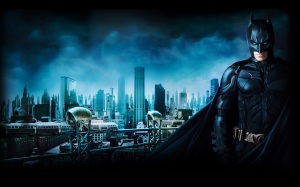Summary:
In general consideration, Metropolis (1927), restored and recreated in 1984, has been the first science fiction film to present the images of a futuristic city as a hell of scientific progress and human despair; these two key terms actually define the two separate worlds presented in the movie. First is the above ground Utopian world where wealthy people live a carefree life; whereas below the ground there is a world of workers who are keeping the machinery of the utopian world functioning in horrifying state of despair.
In the movie, this underground world is owned by Joh Frederson. The character of Maria is a mediator between the underground world and the utopian world. When Joh’s son Freder discovers the horrifying reality of a world beneath, he wants to help the plight of the workers. He initiates a cause with the help of Maria. But when Joh learns about this supposed uprising, he includes Rotwang (the evil inventor) in order to suppress any such cause.
The underground world is a representation of ‘hands’ with those who can only act, while the utopian world is the ‘head’ with those who are thinkers. What Maria espouses in the movie is that she tries to keep the morale of the workers high by predicting that someone will come who will utilize both hands and head to become a ‘heart’ and bring relief for the workers.
And in the end, it is this mediating heart which is shown to be a triumph.
Analysis:
By seeing Metropolis, it appears that today’s world has always been so easily predictable. By picking any of the youtube’s video on the labour machinery working in all developed far eastern, American, Middle Eastern and Asian regions reveal startlingly similar state of affairs as shown in Metropolis, almost a century back. The good roads, well to do people, pleasant buildings, busy activities of the utopian world shown in the movie is what our modern consumer culture and modern city living depicts. Yet, there are debatable questions of to what extent have we achieved this utopia? Can we regard the living conditions of our modern consumers up to the mark (this involves their physical and mental state both)?
The role of the ‘heart’ as mediator too kind of confuses me. If we choose our politics, academics, culture, social work or other segments as playing the role of mediators, but they are too overshadowed with commercialism in various ways. The revolutionists simply want to stop the machinery run by workers in order to protest, but that invites a collapse in its entirety. All these aspects lead to another ambiguous level of thinking, yet I suppose each one of us by pursuing excellence in whatever we do may create a better world around us.
Response:


These two movies made later in time convey a similar demon model of modern city based on anti-technology and anti-science notions. ‘Saving the humans’ has been shown as an antidote notion in all these initatives.

your description of the film is very good but the analysis is quite unclear.
LikeLike